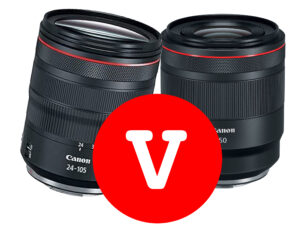In the ever-evolving world of visual arts, the integration of artificial intelligence (AI) with photography is revolutionising how we perceive and create art. With the advent of AI tools like ChatGPT and DALL-E, visual artists now have an unparalleled opportunity to expand their creative horizons. I for one, think we should embrace it, enjoy it, and share it.
The Rise of AI in Visual Artistry
Photographers have traditionally focused on capturing moments through their lenses. However, I think we should think about this: Are photographers just photographers, or visual artists? This thought underscores the importance of using photography and cameras as tools to create new visual artwork, rather than merely taking pictures for their own sake and clicking a shutter.
Just scroll through Midjourney/Discord to see the art, the photorealistic art that very talented people are dreaming up and now with a tool like the Discord app they are empowered to produce. Some of these are street photographs I’d be proud of. I admire who dreamed them up. Maybe, they can’t just go iust and take them. But by embracing AI tools, they are empowered to create these images. I commend them.
Embracing AI: The Ultimate Creative Tool
AI tools such as ChatGPT 4 and DALL-E 3, especially in their premium versions, have emerged as the ultimate tools for creativity. These platforms offer capabilities far beyond traditional photography, enabling artists to explore new realms of creativity. The notion that AI and robots might replace human artists is a misconception. Instead, AI should be viewed as a complementary tool that enhances human creativity.
It will make the originals more valuable
Do you want gold or gold plated? Many of us cannot afford all our jewellery to be solid gold so settle for gold plated. It’ll be the same with photographic art or genuine paintings and drawings. People will pay more to have an original, ‘gold’ piece, but there will be a mass market for AI generated ‘gold plated’ pieces. And, obviously not just more valuable financially, but sentimentally as well.

The Limitations and Potential of AI
While AI has made significant strides, it’s essential to recognise its limitations. For instance, humanoid AI bots, predicted to still be in their infancy even 30 years from now, might excel in mundane tasks like assembly line work, but they lack the agility and creativity inherent in human nature. Observing the natural movements and energy of a young child who at two or three years exhibits remarkable coordination and vivacity, highlights the unique capabilities of humans that AI currently cannot replicate.


AI as a Collaborative Partner in Art
The key to leveraging AI in photography and art lies in collaboration. Artists can use AI for creative ideation, but the final artistic interpretation and edits rest with the human creator. AI can assist in generating ideas or even critiquing work, but it cannot replace the human touch in art. It’s vital to remember that AI, at its core, iterates on past knowledge and lacks the capacity to invent entirely new concepts or envision a future as humans can.

Practical Applications of AI in Photography
For modern photographers, AI offers practical solutions. Imagine being a wedding photographer who has captured 10,000 photos. An AI-powered image sorting tool could help you efficiently sift through these images, identifying the top 50 shots, thus significantly reducing your workload.


For me at work, AI has minimised the time I spend scrolling for a stock image. I can use Photoshop’s AI released in 2023 to create the perfect, unique image, I need for any application.
Here is the proof, with the hero image for this article.
The Joy of Photography
Ultimately, the essence of photography lies in the joy it brings. Whether it’s capturing the innocence and creativity of a child playing or conducting fun-filled photography workshops, the goal is to reawaken the creative spirit within.



AI in photography isn’t about replacing human creativity; it’s about augmenting it, opening new doors to explore and create art that resonates and inspires.



What about Deepfakes?
In the digital age, deepfakes – AI-manipulated images and videos – pose a significant threat by depicting individuals in altered forms, saying or doing things they never did. This technology, which can spread misinformation or be used maliciously, raises serious ethical and legal concerns, particularly in the realm of personal harassment. I have a more detailed article about Deepfakes.
Deepfakes are designed to deceive and are becoming increasingly sophisticated, making them harder to detect. Initially, researchers identified telltale signs such as unnatural blinking patterns, but as deepfake creators adapt, these methods become less effective.
While sophisticated deepfakes are difficult to spot, lower-quality ones may have glaring flaws like poor lip syncing or inconsistent skin tones.
The algorithms are more adept at rendering frontal face profiles than side profiles, suggesting a potential area for detection.
To aid in the detection of deepfakes, resources and tools are being developed. For instance, MIT’s Detect Fakes website offers guidance on identifying deepfakes by focusing on minute details like facial artifacts. The site advises paying close attention to aspects such as facial transformations, glares, blinking, lip movements, natural sounds, beauty marks, and facial hair.
Fact-checking remains a critical defense against deepfakes. Verifying information by cross-referencing with reliable sources helps determine the authenticity of content. This approach is not just about discerning truth in media but also about combating the spread of misinformation.
When encountering a deepfake, the best practice is to avoid sharing it. Sharing even for awareness can contribute to its spread and potential harm. If an individual discovers that they are the subject of a deepfake, legal action is recommended. Creating and distributing content without consent, even if it appears to be made in jest, is illegal.

The emergence of deepfakes in the digital landscape has blurred the lines between reality and fiction. Understanding the nature of deepfakes, being vigilant for signs of manipulation, and using available detection tools are crucial in navigating these challenges. As AI technology continues to advance, staying informed and cautious is increasingly important for protecting truth and integrity in digital media.
This summary highlights the dangers posed by deepfakes and the importance of awareness, detection methods, and legal recourse in combating this growing digital threat. As deepfake technology evolves, so must our approaches to identifying, understanding, and addressing its implications in our increasingly interconnected digital world.
Embracing AI in Your Creative Journey
To embark on this journey of AI-enhanced creativity, consider subscribing to premium AI tools like ChatGPT 4 and DALL-E 3. These platforms offer a new dimension to your artistic toolkit, allowing you to analyze, critique, and enhance your work in ways previously unimaginable. In conclusion, the integration of AI in photography heralds a new era of creative possibilities. It’s not about the fear of AI taking over the art; it’s about how AI can become a valuable partner in your creative journey, helping you explore and express your artistic vision in novel and exciting ways.







































































